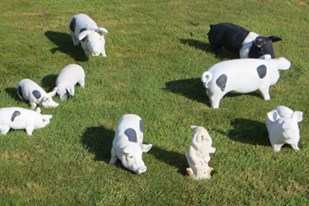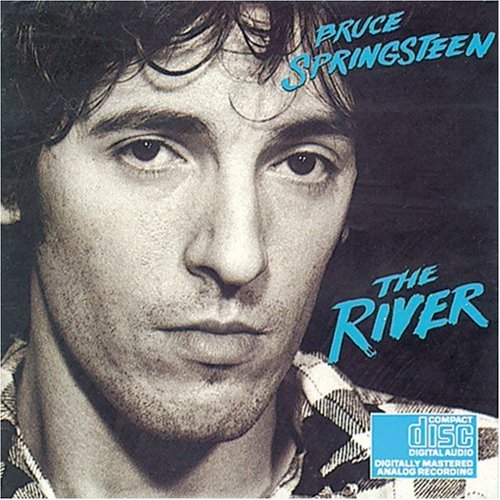
SDB
The Goldsmiths show was too painful to watch all way through – did any of them show a high level of thinking and making? I doubt it….a bad idea (e.g.rainbow jumpers) however well made remains a bad idea but a genius concept badly executed is equally dodgy…a certain shark and tank come to mind….( only that wasn’t genius just advertising).
WB
The thing that gets forgotten (on both sides) is that an idea, a concept, is itself something that requires a high level of craft to produce: look at the elegance in the work of Duchamp, Joseph Kosuth or Sarah Lucas, for example, or the craft that goes into something like Spiral Jetty. An idea is something that needs to be *made* in exactly the same way a pot or painting is.
SDB
Indeed there is internal ‘elegance’ just as there is in say a beautiful theorem..or passage of music..however the point I trying to make is that in my opinion it is ‘honed’ through contact with its formal ‘construction’…the elegance of the Duchamp (apart from readymades?), Lucas and Smithson occurs in its creation? Ideas free of these constraints… See more are swimming around us in the artworld these days and the constraint has gone….thus inelegant and in some cases just poor and flabby….my thesis is it is the contest between thought and form that creates beauty..back to aesthetics…away from pure immature philosophising…
how many ‘great ideas’ badly made have we seen lately….how many bad ideas well made probably even less 🙁
Jez Noond
Spiral jetty is an elegant ‘concept’ and ‘thing’, but its construction will have been necessarily brutal.I think Cragg’s work kinda gets the balance right too.
SDB
will check but I was thinking there must have been quite a few drawings or blueprints? Then a lot of bulldozers you are right..see here http://www.robertsmithson.com/drawings/spiral_jetty_300.htm
JN
oh yeah – but the bulldozers are part of the elegant conception of the piece – the elegant thinking…
The relationship between Oldenburg’s maquettes, drawings, notes and final large pieces is interesting. Although, I think most of his final big pieces are failures. Batcolumn is about the best. With him, I think its all in the drawing anyway.
I have a tiny book of his drawings (Notes in Hand, 1971) – theres a page in there I’ve looking at for over … See more30 years (jesus!) – his design for the NYPD uniform – its basically a clowns outfit…heres a link to another page:
http://www.nqpaofu.com/2002imgs/oldenburg-notes2-386.jpg
WB
Maybe I think of it from the perspective of a writer, ie: the concept and the medium of language are materials in themselves, and shaping them into ideas is craft as much as hammering bronze or manipulating paint on canvas is. Hence an idea has form, shape and craft. I’d say Duchamp, Kosuth and Lucas all do this in the making as well as conception… See more… in Lucas, the way a thing is made supports the idea behind it perfectly, in Duchamp the level of craft in Etants Donee or Female Fig leaf is very high indeed. Where would you place folk arts or unconventional painters like Lowry or Dounier Rousseau? Does the failing in correct perspective and technique undermine the work, or become the source of its appeal? Where do you place someone like Tapies – amazing craftsmanship at the service of an illusion of complete informality…same thing with a fine painter using automatist methods, or a current trompe l’oeil artist like Susan Collis.
SDB
I’d class any naive artist as having intuitive craftsmanship…I wouldn’t use ‘failing’ to describe their art more a pre rennaisance sense of space.
Collis is a very interesting example though as she is using conventional notions of ‘craft’ to create objects that deny that craftmanship but surely the beauty there is in their actual precision despite their nondescript illusionism?
To me it similar to the exquisite beauty of the Blashka natural history exhibits which more than just illustrations but to me are art in their own right…….
http://www.ucd.ie/blaschka/dublin_coll.htm
WB
In that sense, then, the idea of craft as it’s usually defined (in a rather limited way) is as flexible as that of the ideas themselves…I agree on the Blashka glass pieces, scientific models, and art, at the same time. But what if I then took a ‘non-art’ object like a Blashka model (or an x-ray, or NASA mapping of the surface of Venus) and represented is as art, in some other context: does that nullify the craft of the object being shown? An example of someone who does this beautifully is Cornelia Parker – her craft is often in the matching of techniques to ideas and concepts (often philosophical or poetic rather than formal), and much lies in the way she frames and presents the objects she finds. This to me is where the idea that there’s an inherent distinction between craft and conceptualism comes apart – there are just good and bad examples of art using both (or neither), but rarely only one or the other.
SDB
I saw the silver pans piece by Parker at Tate and I’d say she fits neatly into the Cragg assemblage process methodology. i.e. she is using common implements, objects but assembles in a precise and ‘crafted’ way. I’d compare that with Mr Hirst’s really rather boring and aesthetically dull medicine cabinet where placement is immaterial…..might as well visit Boots…
Also Hirst’s ‘spun’ paintings show little craft as any fool ( and he employed people to be his fool) could and did do it….ditto Warhol….is he a craftsman?
He certainly came from a craft/design background which shows in what he ‘allowed’ others to print for him. There a degree of afore-thought there which some neo-conceptualists heaping there retro objects together haphazardly sadly lack…
Warhol is the defining moment for me in this debate. He instigated the Fordism model as he came from an advertising background. Look at a Ruscha, Dine, Johns etc and you still in fine art and craft tradition …after Warhol it’s hell in a handcart for that tradition despite people like Hoyland, Stella and Smithson et al hanging on for dear life.
p.s. Tapies……I visited his foundation in Barcelona and there not a drip or molecule of sand that isn’t crafted in that work. Like Bacon’s ‘accidents’ every slippage is selected/ processed and thought through…..hence its calm beauty.
My problem is with works that assemble, display with a complete disregard to these ‘aesthetics’ and I could name a lot of ‘contemporary’ work that slips into this category especially amongst the college leaver crowd and my contention is that to undo somethign one first has to understand how it can be done.
I saw the silver pans piece by Parker at Tate and I’d say she fits neatly into the Cragg assemblage process methodology. i.e. she is using common implements, objects but assembles in a precise and ‘crafted’ way. I’d compare that with Mr Hirst’s really rather boring and aesthetically dull medicine cabinet where placement is immaterial…..might as well visit Boots…
Also Hirst’s ‘spun’ paintings show little craft as any fool ( and he employed people to be his fool) could and did do it….ditto Warhol….is he a craftsman?
He certainly came from a craft/design background which shows in what he ‘allowed’ others to print for him. There a degree of afore-thought there which some neo-conceptualists heaping there retro objects together haphazardly sadly lack…. See more
Warhol is the defining moment for me in this debate. He instigated the Fordism model as he came from an advertising background. Look at a Ruscha, Dine, Johns etc and you still in fine art and craft tradition …after Warhol it’s hell in a handcart for that tradition despite people like Hoyland, Stella and Smithson et al hanging on for dear life.
p.s. Tapies……I visited his foundation in Barcelona and there not a drip or molecule of sand that isn’t crafted in that work. Like Bacon’s ‘accidents’ every slippage is selected/ processed and thought through…..hence its calm beauty.
My problem is with works that assemble, display with a complete disregard to these ‘aesthetics’ and I could name a lot of ‘contemporary’ work that slips into this category especially amongst the college leaver crowd and my contention is that to undo something one first has to understand how it can be done.
I saw the silver pans piece by Parker at Tate and I’d say she fits neatly into the Cragg assemblage process methodology. i.e. she is using common implements, objects but assembles in a precise and ‘crafted’ way. I’d compare that with Mr Hirst’s really rather boring and aesthetically dull medicine cabinet where placement is immaterial…..might as well visit Boots…
Also Hirst’s ‘spun’ paintings show little craft as any fool ( and he employed people to be his fool) could and did do it….ditto Warhol….is he a craftsman?
He certainly came from a craft/design background which shows in what he ‘allowed’ others to print for him. There a degree of afore-thought there which some neo-conceptualists heaping there retro objects together haphazardly sadly lack…. See more
Warhol is the defining moment for me in this debate. He instigated the Fordism model as he came from an advertising background. Look at a Ruscha, Dine, Johns etc and you still in fine art and craft tradition …after Warhol it’s hell in a handcart for that tradition despite people like Hoyland, Stella and Smithson et al hanging on for dear life.
p.s. Tapies……I visited his foundation in Barcelona and there not a drip or molecule of sand that isn’t crafted in that work. Like Bacon’s ‘accidents’ every slippage is selected/ processed and thought through…..hence its calm beauty.
My problem is with works that assemble, display with a complete disregard to these ‘aesthetics’ and I could name a lot of ‘contemporary’ work that slips into this category especially amongst the college leaver crowd and my contention is that to undo somethign one first has to understand how it can be done.
e.g. Picasso and Braque….
WB
Would tend to agree about the Warhol line, not because it’s ‘conceptual’ instead of ‘crafted’ (there is craft in the silkscreen process, just not Warhol’s own, by and large – and his 1950s illustration and advertising work is beautifully made in a very traditional sense) but because the concepts are usually fairly thin, and the work itself rather ‘… Seem more flat’, with no great physical presence (I’d except his early – late 60s films from this, to some extent, as these are genuinely original as films – not necessarily as ‘art’ – and more philosophically interesting than his paintings – Kitchen, Chelsea Girls, the Screen Tests etc). Similar feelings about Hirst – the craft is there, but he buys it in, and the finished works are hit and miss – in any room of 25 or 30 Hirsts, there’ll be 3 or 4 really good pieces, enough that you can’t completely dismiss him, not enough to suggest consistency or even a single ruling concept, of the kind you find in Warhol. Don’t agree that Warhol destroys that tradition of crafted making, though – whether you like their work or not, during the Britart years, for every Hirst there was a Glenn Brown or Jenny Saville, and for every bad conceptual, video and installation based work, there are others that are more interesting and much stronger – yes, not sure about some of the more obviously Warhol-influenced types who’ve been around, and the Pop Life show of post-Warhol stuff at Tate Modern demonstrated the weakness of much in that line – but draw up another list of concept-led artists like Jeremy Deller, Roger Hiorns, Anya Gallaccio, Ian Hamilton Finlay, Annette Messager, Susan Hiller, John Newling, David Hammons and even some of the better (Archimbolodo-influenced) work by Noble & Webster and you’ll find a lot more craft in both the ideas and the making than I think the simple distinction of ‘conceptual’ and ‘crafted’ tries to suggest. But crucially, maybe, it’s the work coming from the poetic and surrealist lines of descent within modernism, or those with strong links to full-strength philosophical investigation, that do this most consistently…
Wayne Burrows is editor of STAPLE magazine and a poet
http://wayneburrows.wordpress.com
Jezz Noond is a short short story writer currently on a creative writing course at Nottingham University he plays a mean bull fiddle








Recent Comments